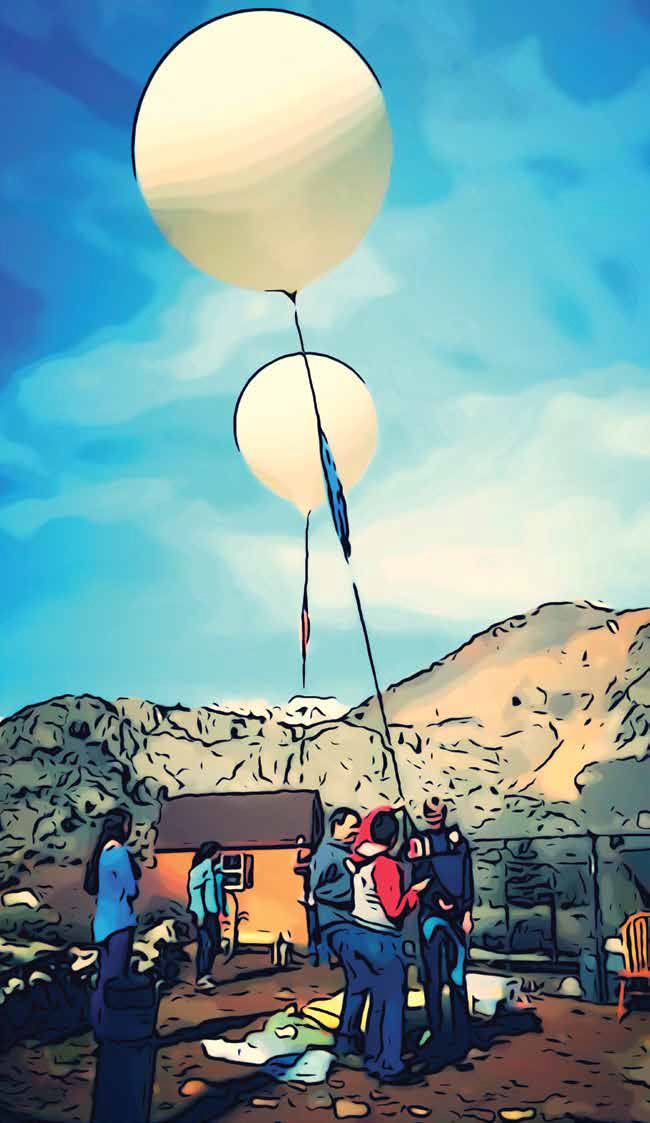Project Spotlight
Incoming Students Send Research into Near Space Environment
By Nancy Yeang
 As a first-year Cal Poly Pomona student, Zachary Gaines was excited to lead a team in launching a high-altitude balloon to the edge of space at 100,000 feet — about 19 miles — to gather data on the radiation durability of 3D printing materials. His five-person team received support and mentorship to workshop their idea, develop an aerospace design, and work with an industry company — essential skills that will translate into the working world.
As a first-year Cal Poly Pomona student, Zachary Gaines was excited to lead a team in launching a high-altitude balloon to the edge of space at 100,000 feet — about 19 miles — to gather data on the radiation durability of 3D printing materials. His five-person team received support and mentorship to workshop their idea, develop an aerospace design, and work with an industry company — essential skills that will translate into the working world.
“This was the perfect program, there was nothing else like it at Cal Poly Pomona,” says Gaines, now an aerospace engineering sophomore. “To have something go from nothing to a complete design is really motivational during your first year.”
Gaines found this opportunity through BLADE (Balloon Launch Assessment Directive for Everyone), a program for incoming students to literally launch their idea and prepare them for more advanced experiences on campus.
BLADE was founded in 2019 by Michael Pham, an aerospace engineering junior, and Jacob Harbuck, an aerospace engineering senior, thanks to the guidance and $8,000 in seed funding from the Projects Hatchery. They wanted to develop an educational program to boost hands-on experiences primarily for incoming students in STEM.
BLADE, in a way, is a microcosm of the Projects Hatchery. Pham and Harbuck created a setting for STEM students to share and receive feedback on their launch proposals before presenting their projects for critiques by industry professionals. The two designs with the highest merits would launch a high-altitude balloon.
“Projects Hatchery was great because of the community environment,” Pham says. “In an engineering bubble,
we would all go to the same solution to a problem, and sometimes none of them work. When you have students from different backgrounds, they can provide different solutions that we would not have been able to think of.”
While Pham and Harbuck are busy laying the foundation of BLADE for current students to take leadership over the program, Harbuck’s experience solidified how much he enjoyed systems engineering in the aerospace industry.
“Two years ago, I had no clue what I wanted to do,” Harbuck says. “But by helping to create BLADE, I realized that I wanted to be part of spacecraft projects and interplanetary travel, where we can reach Jupiter and Pluto.”
Although the balloon launches have been paused because of the pandemic, BLADE still has its Projects Hatchery funding to provide for materials and launches for future students. After the $8,000 is depleted, the program would need to secure additional funding to ensure its longevity.
“What I’m really proud about is creating this program as a student for students — we all pulled through to make this happen,” Pham says. “Projects Hatchery gave us a runway for BLADE to get started. It’s amazing to know that someone at the university has your back.”